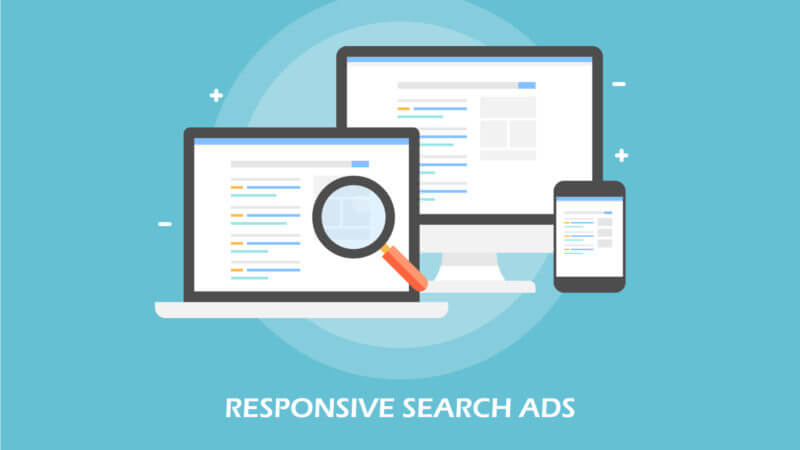As responsive search ads make their way to an account near you, contributor and Googler Matt Lawson shares suggestions on how to implement all of the ad formats in one big happy account. Party time!
It’s been a big year for text ads. Google (my employer) introduced responsive search ads in July, simplifying ad creation and testing for everyone. Last month, Google enabled ads that include a third headline and a longer description. Text ads are more expanded than they’ve ever been.
There’s more room than ever to get your message across to potential customers, which is a beautiful thing. Making sense of all of these changes can be a challenge, especially as responsive search ads make their way to an account near you. Because of these updates, I thought it would be a good idea to share Google’s suggestions on how you could implement all of these formats in one big happy account.
How to think about ads in 2018
A year and a half ago, I wrote about how to create excellent ads, and the overall guidance back then still applies: create a bunch of great ad components, then set those components free (with the magic pixie dust of machine learning). This advice still holds true. The main thing that’s changed is that there are more ways to create those great components.
Ultimately, you’ll want three to five ads per ad group, as many extensions as possible and an optimized ad rotation. The only difference is that “ads” can mean a few different things these days.
Responsive search ads: machine learning’s best friend
Responsive search ads, still in beta, are pretty cool. Search Engine Land’s Ginny Marvin has covered a lot of the basics, so check that out if you haven’t already. And if you’ve read my previous posts about ad optimization, you can imagine that I’m a big fan of this ad format.
Here are some pointers when it comes to responsive search ads:
- Try as many ad components as possible. One responsive search ad can include 15 options for headlines and three options for description lines. Take advantage of all of those. Try adding as many headlines as you can. If a certain headline is dragging down performance, the system will stop serving it. I personally would say to try for nine or more. At a minimum, you should have at least five unique headlines.
- Create distinct headline variations. Make your headlines distinct, too. Include a few headlines that feature your keywords and a few that don’t. Ads can then show up to three headlines and two descriptions.
You should also consider varying the length of your headlines. Don’t worry about maximizing your usage of characters. A shorter headline might perform well in certain places within your account. Check out your ad strength as you’re creating them to get a sense of what the Google Ads system likes. Think of it like a password strength indicator as you’re signing up for a new website.
For most people, one responsive search ad per ad group should be enough. A robust responsive ad with lots of options is obviously so much more than one static text ad. Up to three responsive search ads can be added per ad group, and that’s primarily intended for advertisers who choose to pin certain headlines or description lines (think companies with strict brand guidelines or regulatory requirements).
If you don’t have a reason to pin something, don’t. And if you have to do it, consider pinning a couple of different approved options in that slot so that the machine still has some choices within that position. It’ll be limited, but a limited set of options is better than no option at all.
Note that responsive search ads are still in beta, so they won’t be in all of your accounts quite yet. That’ll change over time.
More expanded text ads
As responsive search ads continue to expand to more languages, text ads now have an optional third headline and a second description line. It’s a good idea to add both of these to your ads. Use those 30-character headlines and 90-character description lines (increased from 80 characters) to get your message out.
A couple of quick notes about creating the best text ads possible:
- Include any sensitive or mandatory info in headline 1, headline 2 or description 1. HL3 and DL2 might not show.
- Your third headline won’t be truncated. If there isn’t enough space to include the full third headline, only headline 1 and headline 2 will show.
- Ad extensions will co-trigger as before. One note is that the longer description line takes priority over callouts or structured snippets, which can still be pulled in line with your description text.
- Most importantly, treat these new fields as a part of your ad. Don’t simply append the same HL3 and DL2 to all of your ads. Don’t sacrifice specificity and relevance for longer ads.
Ad suggestions are your friend
You might also find ad suggestions in some underperforming ad groups in your account. These suggestions surface variations of ads that are currently running in your account. They’re designed to help you out, and you can always make edits to the proposed creatives and control when they should be applied.
We’ve seen great results with them, particularly on non-brand campaigns. I say let them help you out if they’re on brand (and if they aren’t, please send Google that feedback). I’ll say it until I’m blue in the face: more ad options are a good thing.
Have a breadth of ads and ad types in your ad groups
While some ads look different from others, they all have their place. Try to implement at least three ads per ad group with an optimized ad rotation. If you have access to responsive search ads already, you should remember to have at least one additional text ad in each of your ad groups. Responsive search ads are still in beta, and some traffic won’t be included in that experiment. You need a text ad to capture those impressions.
Don’t take my word for it
As with any advice in the land of Google Ads, your mileage may vary. A couple of tidbits for testing these new ad formats:
- Test in high-traffic, non-brand ad groups (we recommend 50 or more impressions per day). Low-volume tests take too long to run. By the time they’ve reached a satisfying conclusion, too many other variables might have changed.
- Don’t pause any existing ads because you’re trying out responsive search ads. As I said above, you still want coverage on non-experimental traffic.
- Monitor performance. Responsive search ads can be reported on at the ad and asset levels. There’s also a combination report so you can see how many impressions different combinations of ads are receiving. The metrics in these reports are a bit limited, especially during the beta period, but there’s plenty of information to use.
We recommend you use campaign drafts and experiments if you want to understand the impact of adding responsive search ads to your existing campaigns. You’ll be able to take a look at overall changes in clicks, cost per click (CPC) and conversions for your responsive ads.
And here’s a final reminder about testing: Don’t overly fixate on metrics like click-through rate (CTR) and conversion rate. These new ad formats are about driving more impressions, clicks and conversions. There are all sorts of instances where you might end up serving impressions in a low CTR placement that you never would have qualified for before. A high CTR isn’t the end goal; it should be more sales for your business.
Conclusion
We’ve come a long way from simple text ads. Responsive search ads offer a glimpse of how flexible and powerful ads can be. Even if you don’t have access to the responsive search ads beta, you can still take advantage of longer text ads, which we’ve seen drive better and better performance for advertisers.
Opinions expressed in this article are those of the guest author and not necessarily Search Engine Land. Staff authors are listed here.



